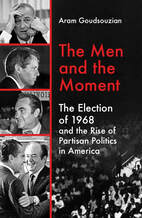
The presidential election of 1968 forever changed American politics. In this character-driven narrative history, Aram Goudsouzian portrays the key transformations that played out over that dramatic year. It was the last "Old Politics" campaign, where political machines and party bosses determined the major nominees, even as the "New Politics" of grassroots participation powered primary elections. It was an election that showed how candidates from both the Left and Right could seize on "hot-button" issues to alter the larger political dynamic. It showcased the power of television to "package" politicians and political ideas, and it played out against an extraordinary dramatic global tableau of chaos and conflict. More than anything else, it was a moment decided by a contest of political personalities, as a group of men battled for the presidency, with momentous implications for the nation’s future.
Well-paced, accessible, and engagingly written, The Men and the Moment chronicles anew the characters and events of the 1968 campaign as an essential moment in American history, one with clear resonance in our contemporary political moment.
Well-paced, accessible, and engagingly written, The Men and the Moment chronicles anew the characters and events of the 1968 campaign as an essential moment in American history, one with clear resonance in our contemporary political moment.
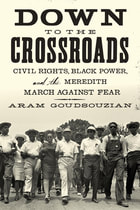
Down to the Crossroads: Civil Rights, Black Power, and the Meredith March Against Fear is the engrossing story of a march that became the key turning point in the history of the civil rights movement.
On June 5, 1966, the civil rights hero James Meredith left Memphis, Tennessee, on foot. Setting off toward Jackson, Mississippi, he hoped his march would promote black voter registration and defy racism. The next day, he was shot by a mysterious white man and transferred to a hospital.
What followed was one of the key dramas of the civil rights era. When the leading figures of the civil rights movement flew to Mississippi to carry on Meredith’s effort, they found themselves confronting southern law enforcement officials, local activists, and one another. In the subsequent three weeks, Martin Luther King Jr. narrowly escaped a mob attack, protesters were teargassed by state police, Lyndon Johnson refused federal intervention, and the young charismatic activist Stokely Carmichael first led the chant that would define the next phase of the civil rights era: Black Power.
Down to the Crossroads is the story of the last great march of the civil rights era and the first great showdown of the turbulent years that followed. Tracking rural demonstrators’ courage and impassioned debates among movement leaders, it reveals the complex legacy of an event that would both integrate African Americans into the political system and inspire an era of bolder protests against it. Full of drama and historical resonance, this book is civil rights history at its best.
On June 5, 1966, the civil rights hero James Meredith left Memphis, Tennessee, on foot. Setting off toward Jackson, Mississippi, he hoped his march would promote black voter registration and defy racism. The next day, he was shot by a mysterious white man and transferred to a hospital.
What followed was one of the key dramas of the civil rights era. When the leading figures of the civil rights movement flew to Mississippi to carry on Meredith’s effort, they found themselves confronting southern law enforcement officials, local activists, and one another. In the subsequent three weeks, Martin Luther King Jr. narrowly escaped a mob attack, protesters were teargassed by state police, Lyndon Johnson refused federal intervention, and the young charismatic activist Stokely Carmichael first led the chant that would define the next phase of the civil rights era: Black Power.
Down to the Crossroads is the story of the last great march of the civil rights era and the first great showdown of the turbulent years that followed. Tracking rural demonstrators’ courage and impassioned debates among movement leaders, it reveals the complex legacy of an event that would both integrate African Americans into the political system and inspire an era of bolder protests against it. Full of drama and historical resonance, this book is civil rights history at its best.
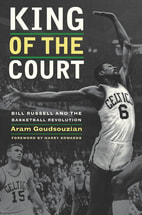
King of the Court: Bill Russell and the Basketball Revolution chronicles the life and career of this champion athlete, racial pioneer, and fascinating personality. Russell invested enormous significance in winning championships, yet he fretted about his social utility as an athlete. He cherished his bonds with both white and black teammates, yet he radiated defiance of white expectations. He developed a strong self-pride independent of sports, but part of him always remained the awkward, bookish child who missed his dead mother.
Yet, like no athlete before him, Russell challenged the politics of sport. In an era when black athletes were supposed to display appreciative deference, he underwent an agonizing personal crisis. He started decrying racist institutions, embracing his African roots, and challenging the nonviolent tenets of the civil rights movement. While crumbling basketball’s racial barriers, he foreshadowed the “Revolt of the Black Athlete.” His courage forced sports fans to consider him as more than a social symbol. He demanded recognition as a complicated individual, one who expressed the dreams of Martin Luther King while echoing the warnings of Malcolm X.
Yet, like no athlete before him, Russell challenged the politics of sport. In an era when black athletes were supposed to display appreciative deference, he underwent an agonizing personal crisis. He started decrying racist institutions, embracing his African roots, and challenging the nonviolent tenets of the civil rights movement. While crumbling basketball’s racial barriers, he foreshadowed the “Revolt of the Black Athlete.” His courage forced sports fans to consider him as more than a social symbol. He demanded recognition as a complicated individual, one who expressed the dreams of Martin Luther King while echoing the warnings of Malcolm X.
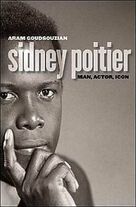
The first full biography of actor Sidney Poitier analyzes the life and career of a Hollywood legend, from his childhood in the Bahamas to his 2002 Oscar for lifetime achievement. Poitier is a gifted actor, a great American success story, an intriguing personality, and a political symbol; his life and career illuminate America's racial history.
In such films as Lilies of the Field, In the Heat of the Night, and Guess Who's Coming to Dinner, Poitier's middle-class, mannered, virtuous screen persona contradicted prevailing film stereotypes of blacks as half-wits, comic servants, or oversexed threats. His screen image and public support of nonviolent integration assuaged the fears of a broad political center, and by 1968, Poitier was voted America's favorite movie star.
Through careful readings of every Poitier film, the book shows that Poitier's characters often made sacrifices for the good of whites and rarely displayed sexuality. As the only black leading man during the civil rights era, Poitier chose roles and public positions that negotiated the struggle for dignity. By 1970, times had changed and Poitier was the target of a backlash from film critics and black radicals, as the new heroes of "blaxploitation" movies reversed the Poitier model.
In the 1970s, Poitier shifted his considerable talents toward directing, starring in, and producing popular movies that employed many African Americans, both on and off screen. After a long hiatus, he returned to starring roles in the late 1980s. More recently, the film industry has reappraised his career, and Poitier has received numerous honors recognizing his multi-faceted work for black equality in Hollywood. As this biography affirms, Poitier remains one of American popular culture's foremost symbols of the possibilities for and limits of racial equality.
In such films as Lilies of the Field, In the Heat of the Night, and Guess Who's Coming to Dinner, Poitier's middle-class, mannered, virtuous screen persona contradicted prevailing film stereotypes of blacks as half-wits, comic servants, or oversexed threats. His screen image and public support of nonviolent integration assuaged the fears of a broad political center, and by 1968, Poitier was voted America's favorite movie star.
Through careful readings of every Poitier film, the book shows that Poitier's characters often made sacrifices for the good of whites and rarely displayed sexuality. As the only black leading man during the civil rights era, Poitier chose roles and public positions that negotiated the struggle for dignity. By 1970, times had changed and Poitier was the target of a backlash from film critics and black radicals, as the new heroes of "blaxploitation" movies reversed the Poitier model.
In the 1970s, Poitier shifted his considerable talents toward directing, starring in, and producing popular movies that employed many African Americans, both on and off screen. After a long hiatus, he returned to starring roles in the late 1980s. More recently, the film industry has reappraised his career, and Poitier has received numerous honors recognizing his multi-faceted work for black equality in Hollywood. As this biography affirms, Poitier remains one of American popular culture's foremost symbols of the possibilities for and limits of racial equality.

Forget the Blizzard of 1978. New England's storm of the century was the Hurricane of 1938. Sometimes called the "Long Island Express" because it rolled through there on the first day of autumn, the hurricane tore northward straight through the heart of New England, wreaking death and destruction with virtually no warning.
The storm registered peak sustained winds of 121 miles per hour, and one gust registered 186 at the Blue Hills Observatory outside Boston. Seawater killed plant life 20 miles inland, and ocean salt sprayed windows in Montpelier, Vermont. An estimated 275 million trees were uprooted or damaged. About 20,000 miles of power and telephone lines were knocked down. Along the shore, 7,000 cottages and 2,000 other houses were destroyed, and the human death toll was estimated at 680. More had died in previous U.S. storms, but given the concentration of population and development on Long Island and in New England, the hurricane of 1938 was the costliest natural disaster in American history to that time.
In The Hurricane of 1938, you will read the sometimes tragic, sometimes heroic stories of the men, women, and children who experienced the storm, and you will learn how the hurricane shaped and reflected American life during the Great Depression.
The storm registered peak sustained winds of 121 miles per hour, and one gust registered 186 at the Blue Hills Observatory outside Boston. Seawater killed plant life 20 miles inland, and ocean salt sprayed windows in Montpelier, Vermont. An estimated 275 million trees were uprooted or damaged. About 20,000 miles of power and telephone lines were knocked down. Along the shore, 7,000 cottages and 2,000 other houses were destroyed, and the human death toll was estimated at 680. More had died in previous U.S. storms, but given the concentration of population and development on Long Island and in New England, the hurricane of 1938 was the costliest natural disaster in American history to that time.
In The Hurricane of 1938, you will read the sometimes tragic, sometimes heroic stories of the men, women, and children who experienced the storm, and you will learn how the hurricane shaped and reflected American life during the Great Depression.
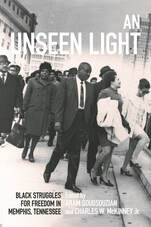
An Unseen Light: Black Struggles for Freedom in Memphis, Tennessee is a collection of essays published in 2018 and co-edited with Charles McKinney. In it, eminent and rising scholars present a multidisciplinary examination of African American activism in Memphis from the dawn of emancipation to the twenty-first century.
Together, they investigate episodes such as the 1940 "Reign of Terror" when black Memphians experienced a prolonged campaign of harassment, mass arrests, and violence at the hands of police. They also examine topics including the relationship between the labor and civil rights movements, the fight for economic advancement in black communities, and the impact of music on the city's culture. Covering subjects as diverse as politics, sports, music, activism, and religion, An Unseen Light illuminates Memphis's place in the long history of the struggle for African American freedom and human dignity.
Together, they investigate episodes such as the 1940 "Reign of Terror" when black Memphians experienced a prolonged campaign of harassment, mass arrests, and violence at the hands of police. They also examine topics including the relationship between the labor and civil rights movements, the fight for economic advancement in black communities, and the impact of music on the city's culture. Covering subjects as diverse as politics, sports, music, activism, and religion, An Unseen Light illuminates Memphis's place in the long history of the struggle for African American freedom and human dignity.
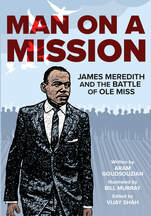
In 1962, James Meredith famously desegregated the University of Mississippi (a.k.a. Ole Miss). As the first Black American admitted to the school, he demonstrated great courage amidst the subsequent political clashes and tragic violence. After President Kennedy summoned federal troops to help maintain order, the South—and America at large—would never be the same.
Man on a Mission depicts Meredith’s relentless pursuit of justice, beginning with his childhood in rural Mississippi and culminating with the confrontation at Ole Miss. A blend of historical research and creative inspiration, this graphic history tells Meredith’s dramatic story in his own singular voice.
From the dawn of the modern civil rights movement, Meredith has offered a unique perspective on democracy, racial equality, and the meaning of America. Man on a Mission presents his captivating saga for a new generation in the era of Black Lives Matter.
Man on a Mission depicts Meredith’s relentless pursuit of justice, beginning with his childhood in rural Mississippi and culminating with the confrontation at Ole Miss. A blend of historical research and creative inspiration, this graphic history tells Meredith’s dramatic story in his own singular voice.
From the dawn of the modern civil rights movement, Meredith has offered a unique perspective on democracy, racial equality, and the meaning of America. Man on a Mission presents his captivating saga for a new generation in the era of Black Lives Matter.
